
Saturday, September 15, 2012
"An Amazing Day"
12:45am

Saturday, September 15, 2012
"An Amazing Day"
12:45am
|
(I wake from having gone to bed at 8pm.) What an amazing day yesterday was! We woke leisurely and I got a newspaper, thinking to see if there was anything happening we'd not want to miss. I finished the two crosswords and Julia helped me with the 'Jumble'. We went again to Ghini's and we got the speciality: Eggs Provençal. The huge tomato slices with the perfectly spiced eggs were heavenly. Then onto the University Museums. The museum of art held some favorites I remembered from our last visit, plus many pieces new to me. I enjoyed the drawing exhibition, as it held drawings and etchings ranging from those by Rembrandt to those in more recent eras. |
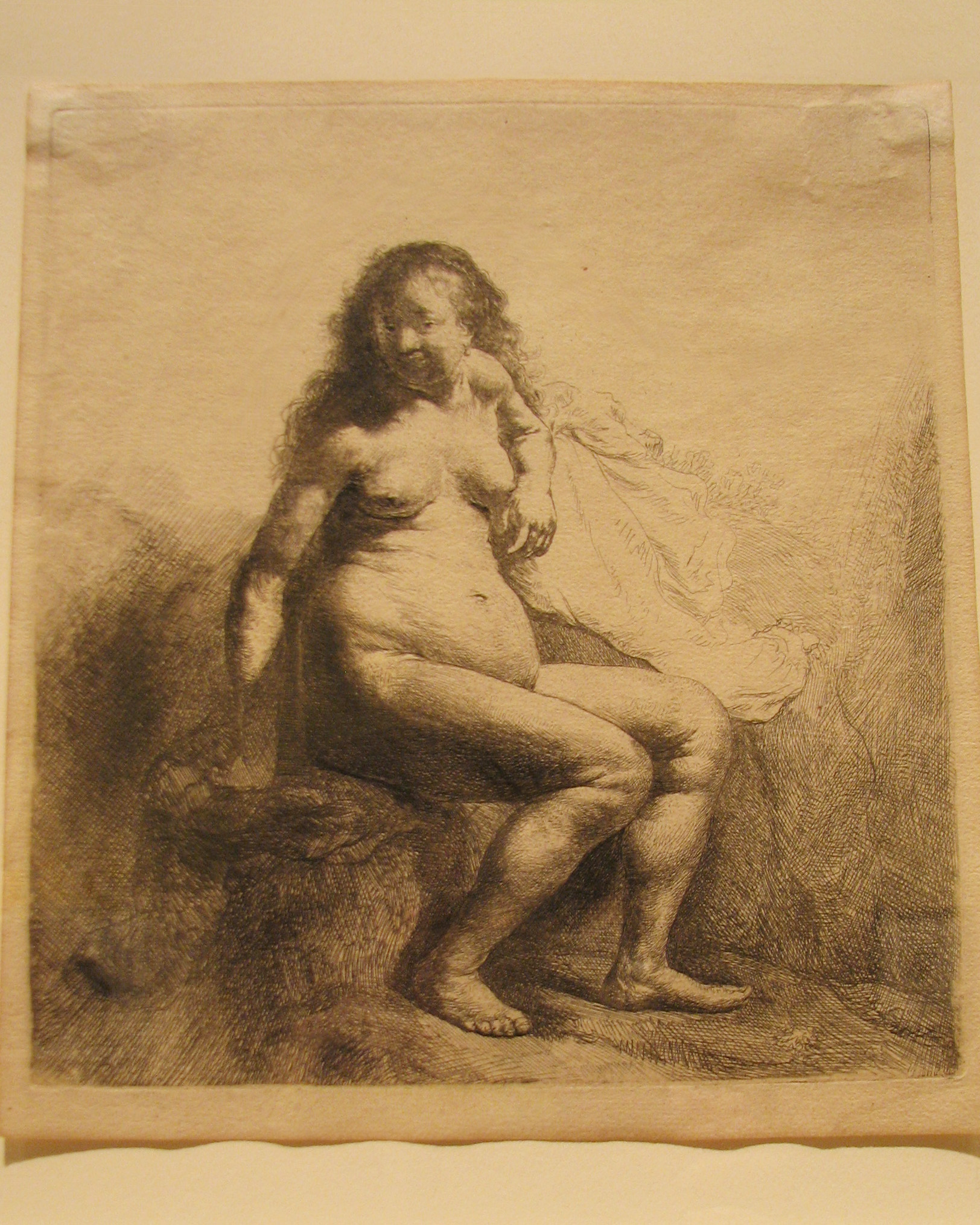 Seated Female Nude, etching, ca. 1631 Rembrandt van Rijn, (Dutch, 1906 - 1669) Gift of Dr. and Mrs. Stanley H. Schneider, UAMA 1972.008.002 |
| The wife of Gaston Lachaise must not have complained that he drew her rump too big: |
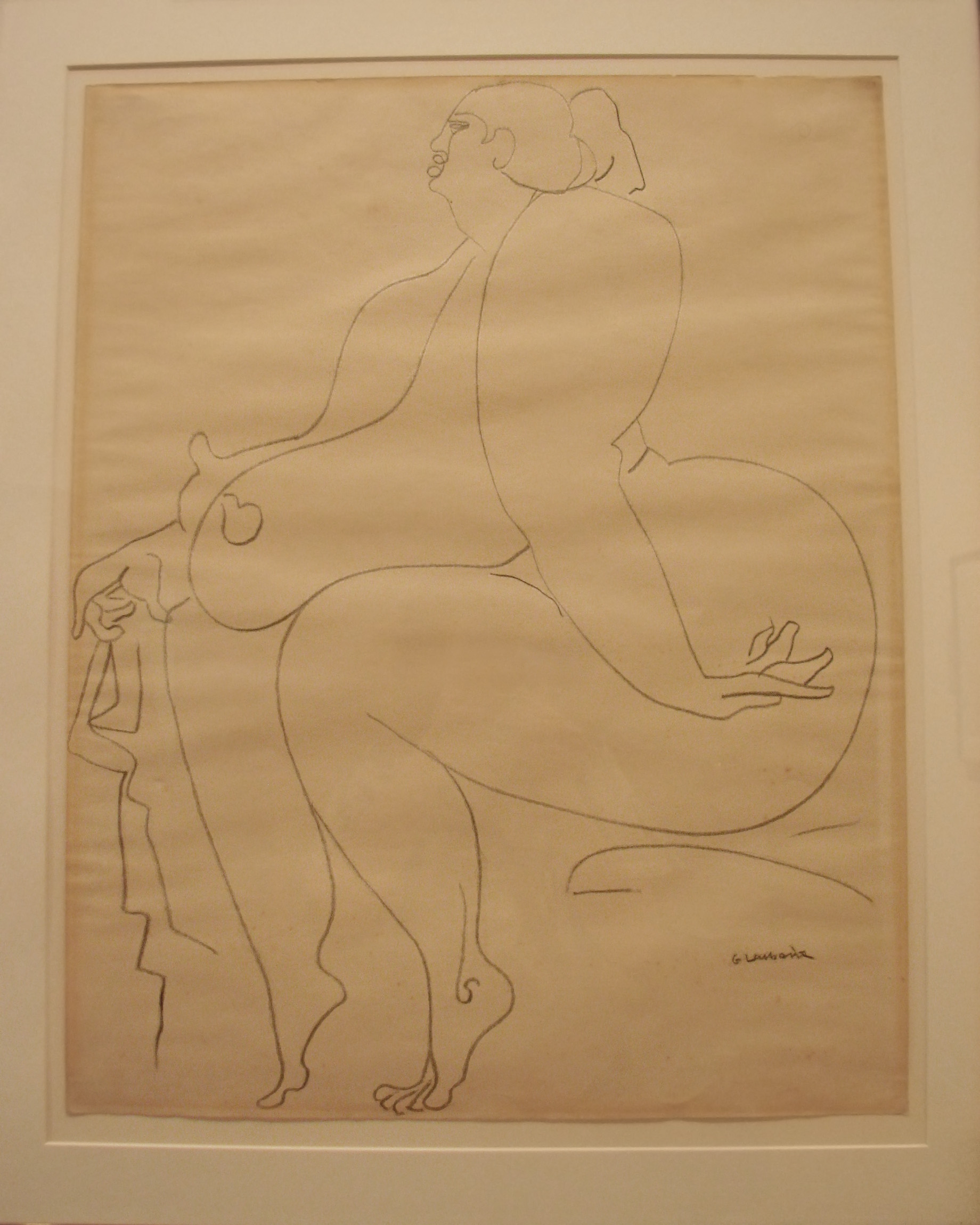 Seated Nude (Portrait of the Artist's Wife), pencil Gaston Lachaise, (French/American, 1882 -1935) Gift of Edward Joseph Gallagher, Jr.; UAMA 1968.007.003 |
|
Still, I like the smooth quickness of his lines. As the museum's info card says, "Lachaise's portrait of his wife reminds us that drawing can be fun and expressive. Using his arm, not his wrist, Lachaise employs a quick gestural movement to convey energetic line with lyricism and flair." He also liked to portray his wife in bronze, as seen at the Met museum. I like the peaceful qualities of this sculpture by Maillol: |
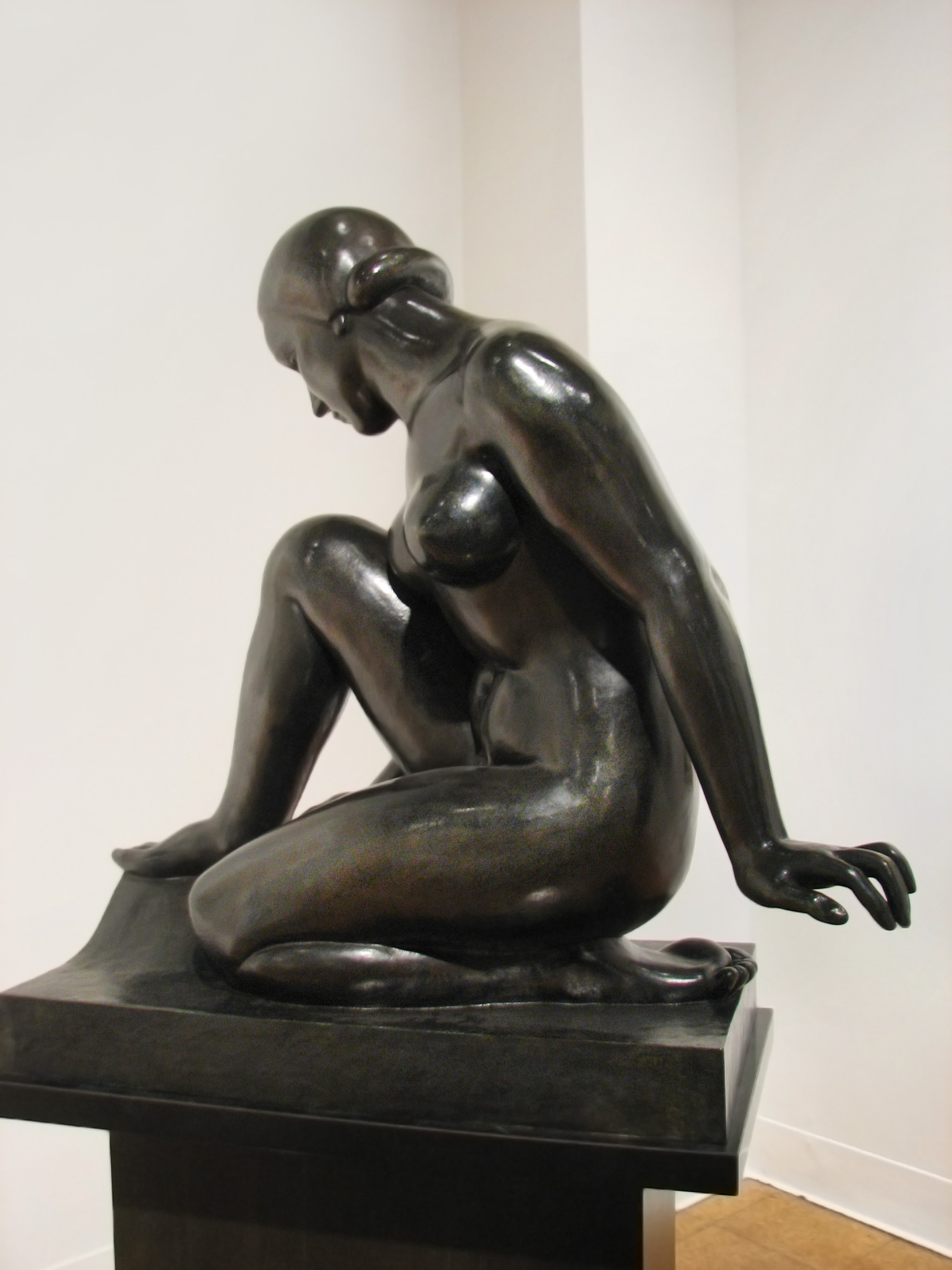 Monument à Debussy, bronze, 1930 Aristide Maillol, (French, 1861-1944) Gift of Edward Joseph Gallagher, Jr. in memory of Edward Joseph Gallagher, Ann Hay Gallagher, and Edward Joseph Gallagher III, UAMA 1978.005.001
|
|
While we wandered the galleries, a guitarist was sitting in the area where the paintings from the 15th century paintings are displayed. His classical music made a pleasant background to our viewing of the art. An even nicer surprise lay in store! At 11:00am an entire concert by various guitarists happened in that gallery room. (Apparently, it had been rescheduled from September 7th, as the playbill bore that date.) How lovely it was to sit so close and hear the music. All the guitarists were good, but I especially loved Renato Serrano, who did "Le Depart" by Napoléon Coste (1805-1883), "Sonata K239" by Domenico Scarlattti and "Malagueña / Bajo la Palmera" by Isaac Albéniz (1860-1909. I wouldn't leave the museum without capturing this favorite detail of a sculpture in process: |
| From there, we went to the Arizona State Museum. I never knew about this museum, which was establish by the Arizona Territorial Legislature in 1893, making it the oldest and largest anthropology museum in the regions. It's also an affliliate of the Smithsonian Institution. |
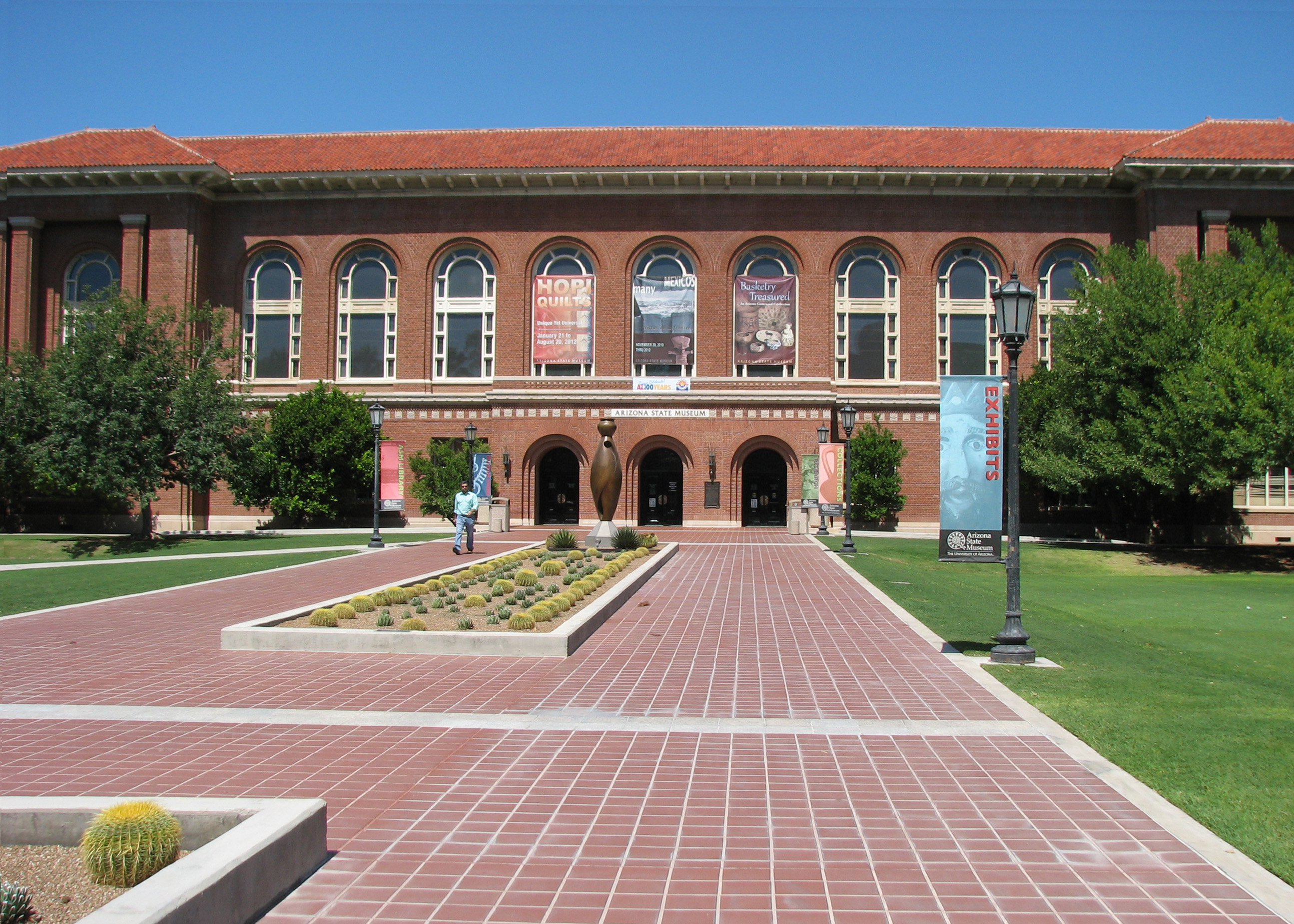
| They feature an exhibit on ten Native American Cultures in the Southwest, their history and how they are doing today. I also loved the Pottery Project display. |
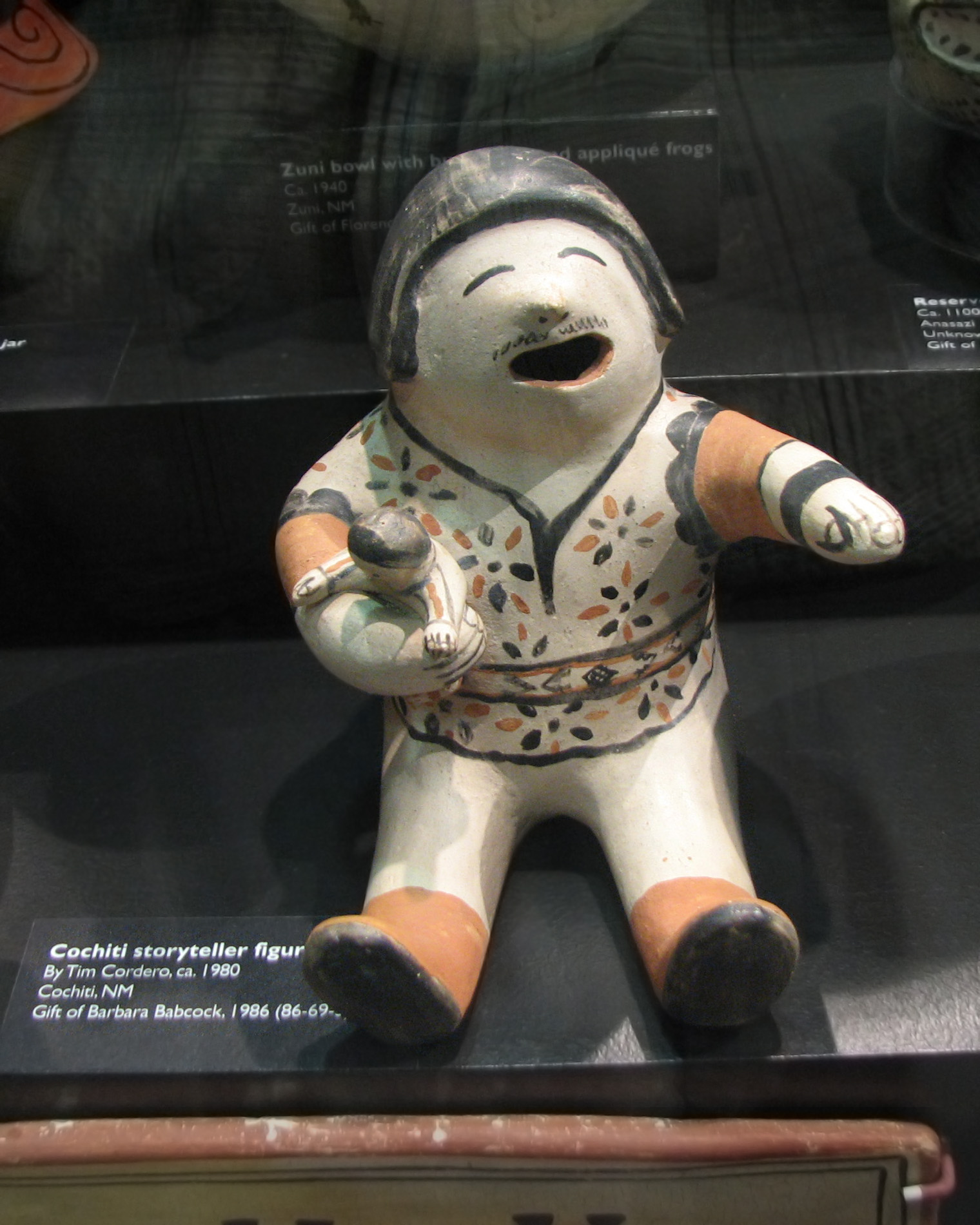 Cochiti storyteller figure, ca. 1980 Tim Cordero, Cochiti, NM Gift of Barbara Babcock, 1989, ASM 86-69-3) |
| Most fascinating is what the young potters are doing. One curator in the movie that played in one corner explained to understand the modern pots, he had to study the whole 2000 year history which led up to their creation. I especially like the pots by Diego Romero, who seems a little influenced by Keith Haring. But he takes it into a whole new level. All very exciting! |
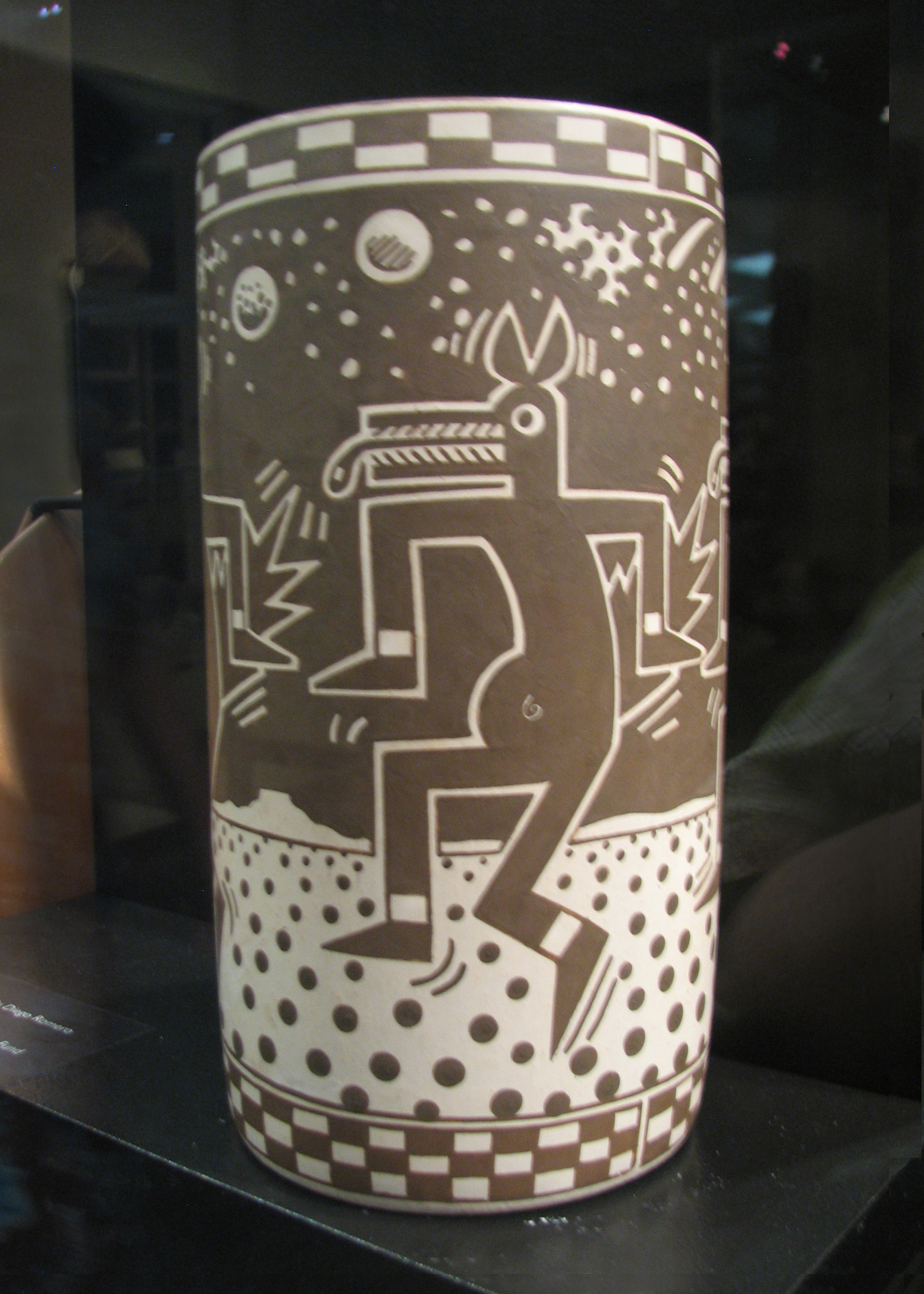
Night Falling, 2009 Diego Romero, Cochiti Pueblo, NM Chaco-inspired cylinder jar, native clay with mineral paint ASM Purchase, Friends of the ASM Colls. Fund, ASM 2009-839-1 "Diego Romero's bowls and jars are in museum collections worldwide, including the Denver Art Museum, the Boston Museum of Fine Arts, the British Museum in London and the Cartier Foundation in Paris." (From the artist's statement) |
|
Despite a little confusion, we found our way back to our car. Julia was craving fish and I was craving spanokopita, the spinach pie. Opa, the restaurant we ate the day before, has both! So there we went. The salmon was nicely seasoned and the spinach pie was heavenly. To do something else, we wondered? We were both a little tired and headed back to the hotel to watch the disturbing news reports. I worry about the U.S. embassies in the Middle East. Later this morning, we'll take the long route back to Yuma. What a lovely vacation this has been, so many good memories to treasure. |
Forward...
Go Back to Archives...
Go Back to Main Journal Index Page...
Go to Index of Joan's pages...
![]()
© Joan Ann Lansberry